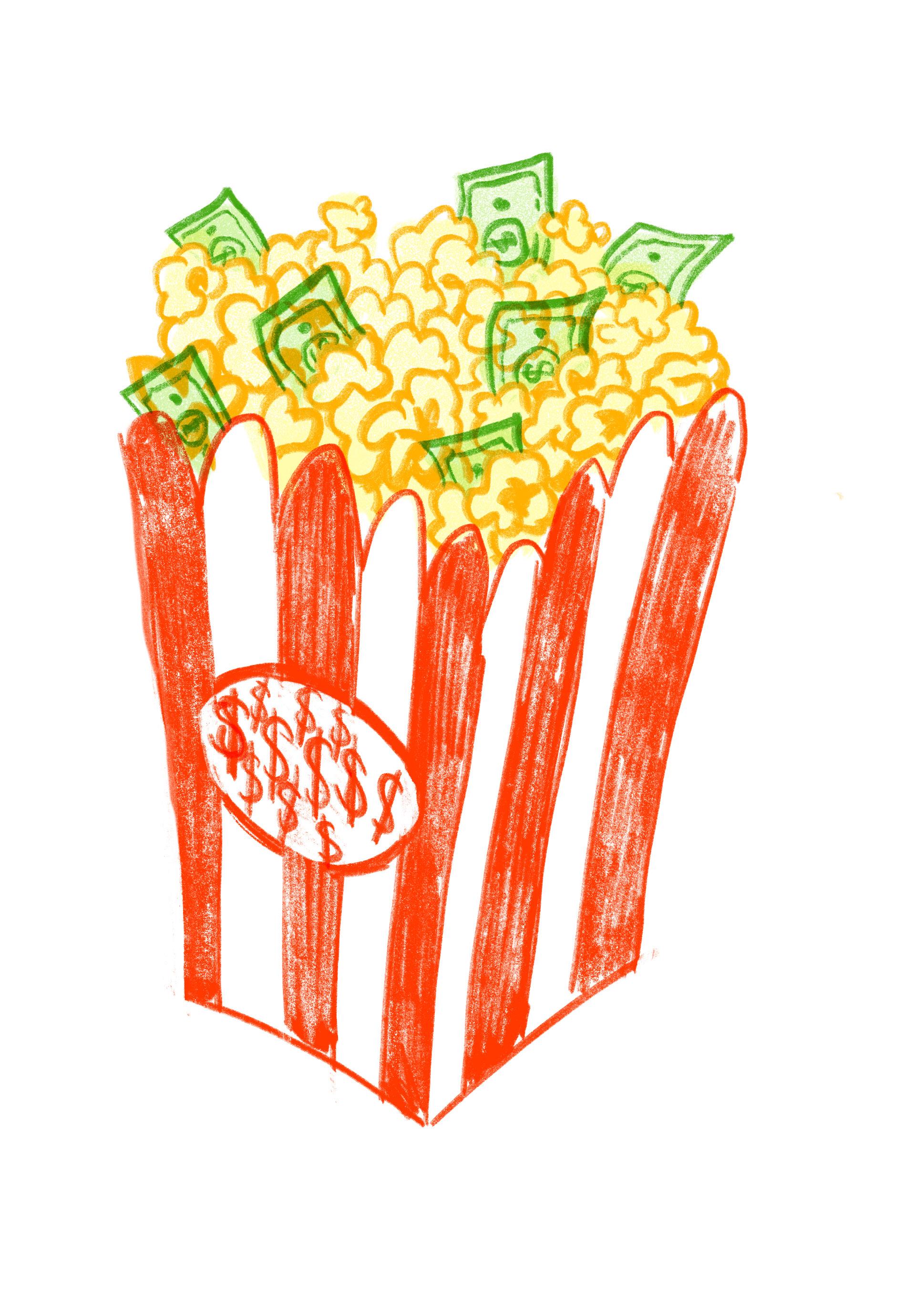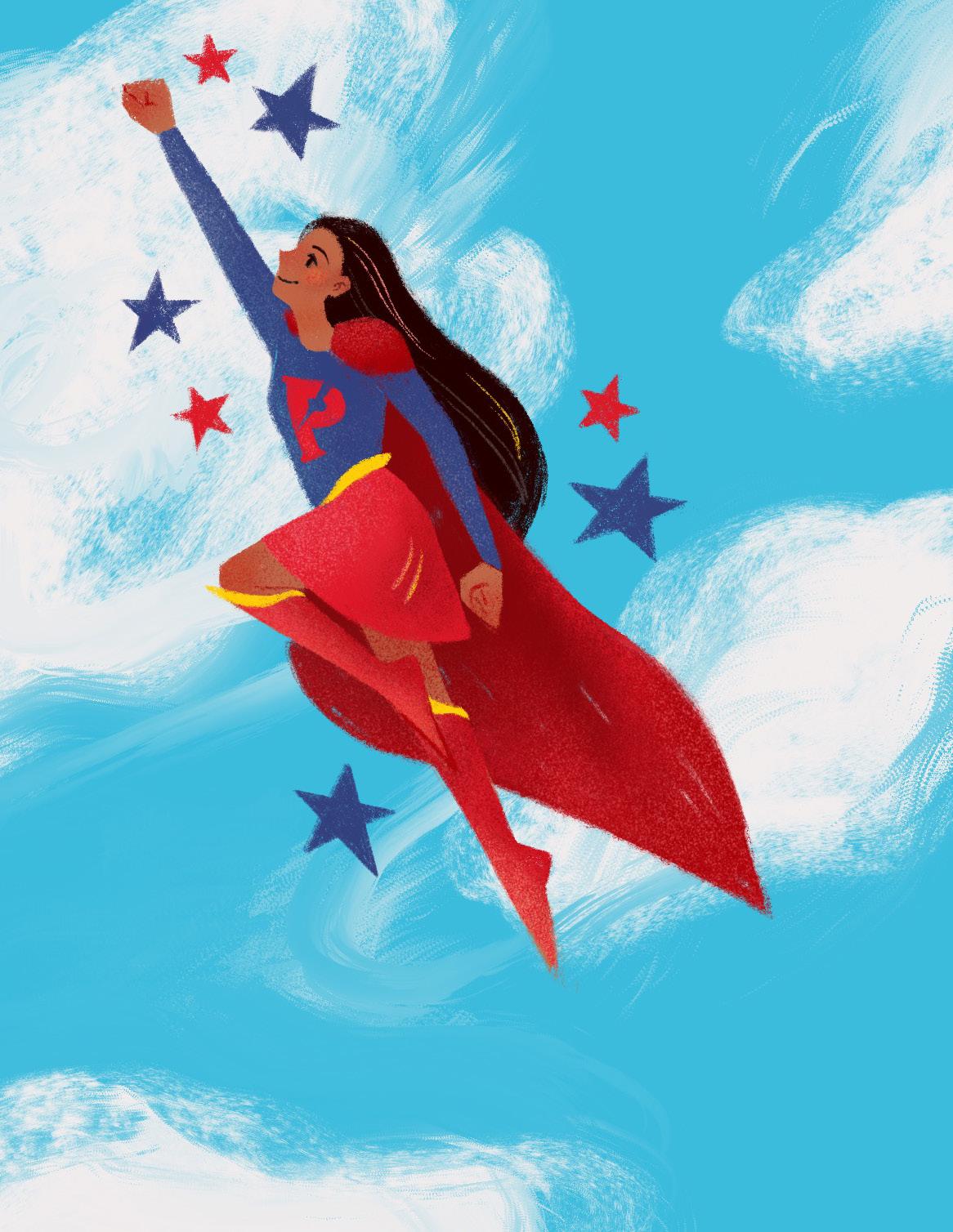FROM PARVATI TO PICASSO AN EXPLORATION OF SURREALISM IN HINDU ARTWORK
T
here’s something uniquely sublime in the surreal. Like reading a storybook but with every other chapter ripped out, or trying to assemble a puzzle but with each piece the same color. Perhaps even the stylistic equivalent of dividing by zero. I find myself drawn to the aesthetic not because it represents the unknown but rather because of my inexplicable familiarity with it. To me, surrealism is evoked not only through melting clocks or landscapes of unbalanced perspectives, but also through the fantastical iconography of my Hindu heritage. I grew up surrounded by a world of motifs seemingly absurd to the unfamiliar eye: the coalescence of man and animal in depictions of deities like elephant-headed Ganesha and lion-headed Narasimha; the flippant disregard of the rules of anatomical proportion in the drawings of the ten-headed villain Ravana; the vibrant blue skin of Krishna and Vishnu. These images, found everywhere from Indian children’s comic books to miniature statues resting on every Hindu family’s mantle, illustrate how the aesthetic of the surreal transcends time, geography, and culture. Here, I aim not to confine Hindu art to the Western-constructed label of “surrealism”, nor to trivialize it as a spectacle or exhibition of exoticism. Instead, I seek to expand surrealism as a category to include varied cultural viewpoints and to celebrate the otherworldly elements of the Hindu aesthetic. Surrealism has existed in Indian art from time immemorial. According to renowned Indian art critic Sovon Som, surreal aesthetics reflect the “human predicament in the Indian sensibility.” Artists then and now preserve the history and mythology of the world’s oldest religion through iconography both profoundly alluring and beautifully bizarre. The religiosity of the art form is a critical part of its construction, and its storied history lends it even more significance. Look closely in the Vedas (or if you happen to have a Hindu grandmother, ask her) and you can find an explanation of why things appear so odd: the god Shiva achieved his blue complexion as a consequence in the creation of the universe, and the villian Ravana’s ten heads come from a sacrificial ritual gone awry.
16
THE WALK MAGAZINE
SPRING 2020
The rich history behind the visual aesthetic evokes a deeply personal experience, providing a means of solace to those who seek to be grounded by a higher purpose. Spirituality and art have always been intertwined, and Hindu tradition is no exception. I myself have fond memories of celebrating festivals in my youth, sitting next to my mother as she taught me how to draw rangoli, the geometric patterns chalked at the doorstep of a residence to symbolically welcome gods inside. Though my designs were amateur, I had always found the process meditative, not unlike that of the art of mandala. Mandala patterns, so popularly found as tapestries in college dorm rooms, date back to Hindu and Buddhist practices of meditation and ritual practice from the first century. The abstract nature of these images helps provide escape from the realities of the material world, allowing for an odd sense of constancy amidst the chaos of reality. European surrealists may have aimed to evoke similar feelings in their own work, which formally emerged as an artistic movement during the aftermath of the first world war. As noted by museum curator Mark Scala, artists imbued their pieces with the “language of dreams, free association, and Freudian psychoanalytic theory,” in order to “help transform both themselves and a society that seemed inescapably bound for fascism and war.” Perhaps processing this turmoil through creation was its own unique mode of spirituality for these artists; a way to craft their own mythology by paying homage to themes and motifs of everyday life. For Hindu and Western artists alike, depicting the surreal was a way to weave meaning in a world in which reason eluded them.
For Hindu and Western artists alike, depicting the surreal was a way to weave meaning in a world in which reason eluded them.








